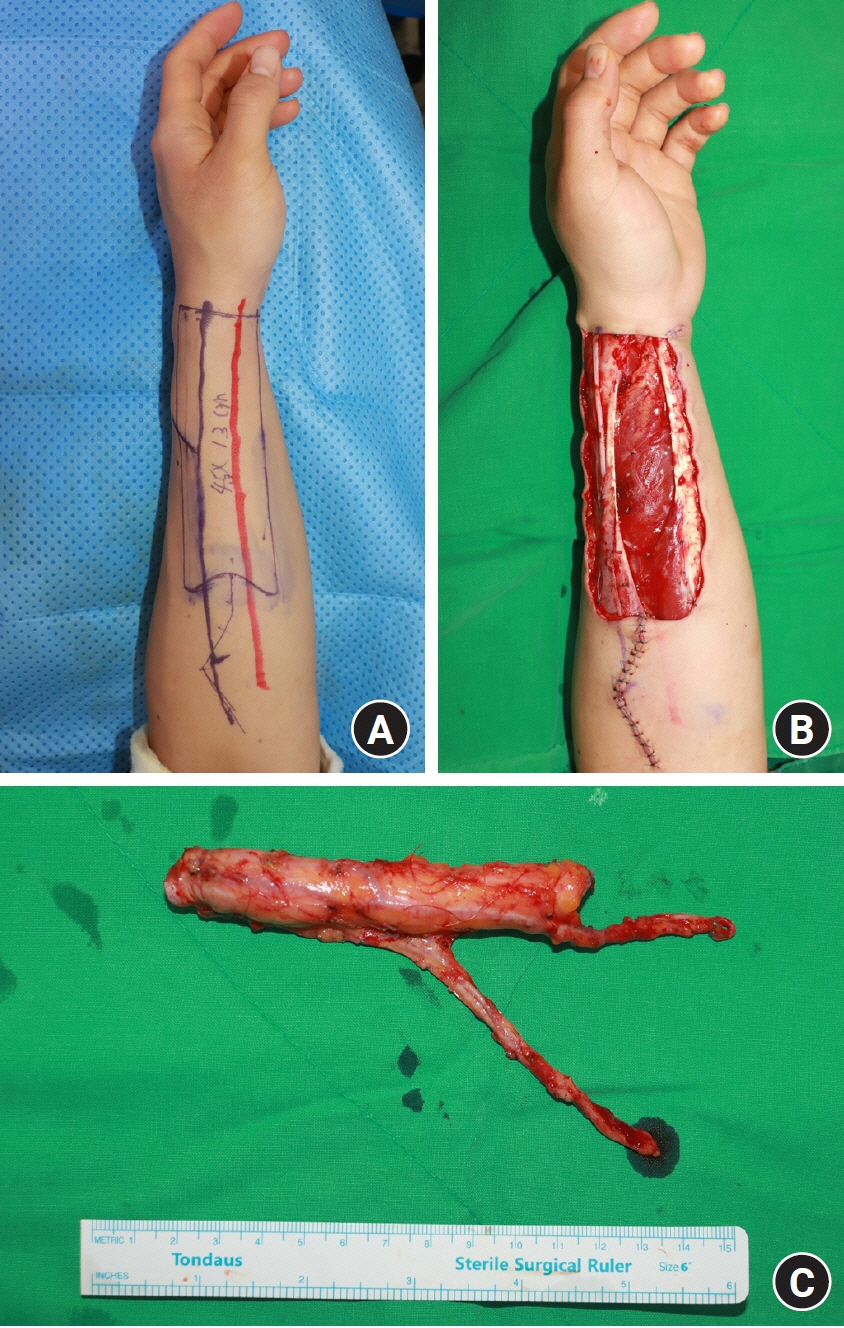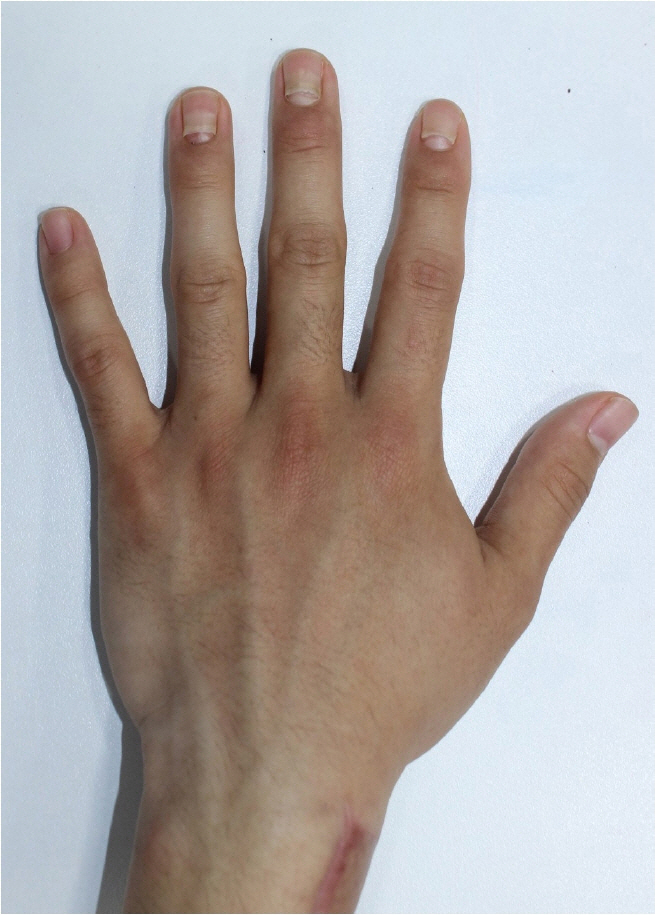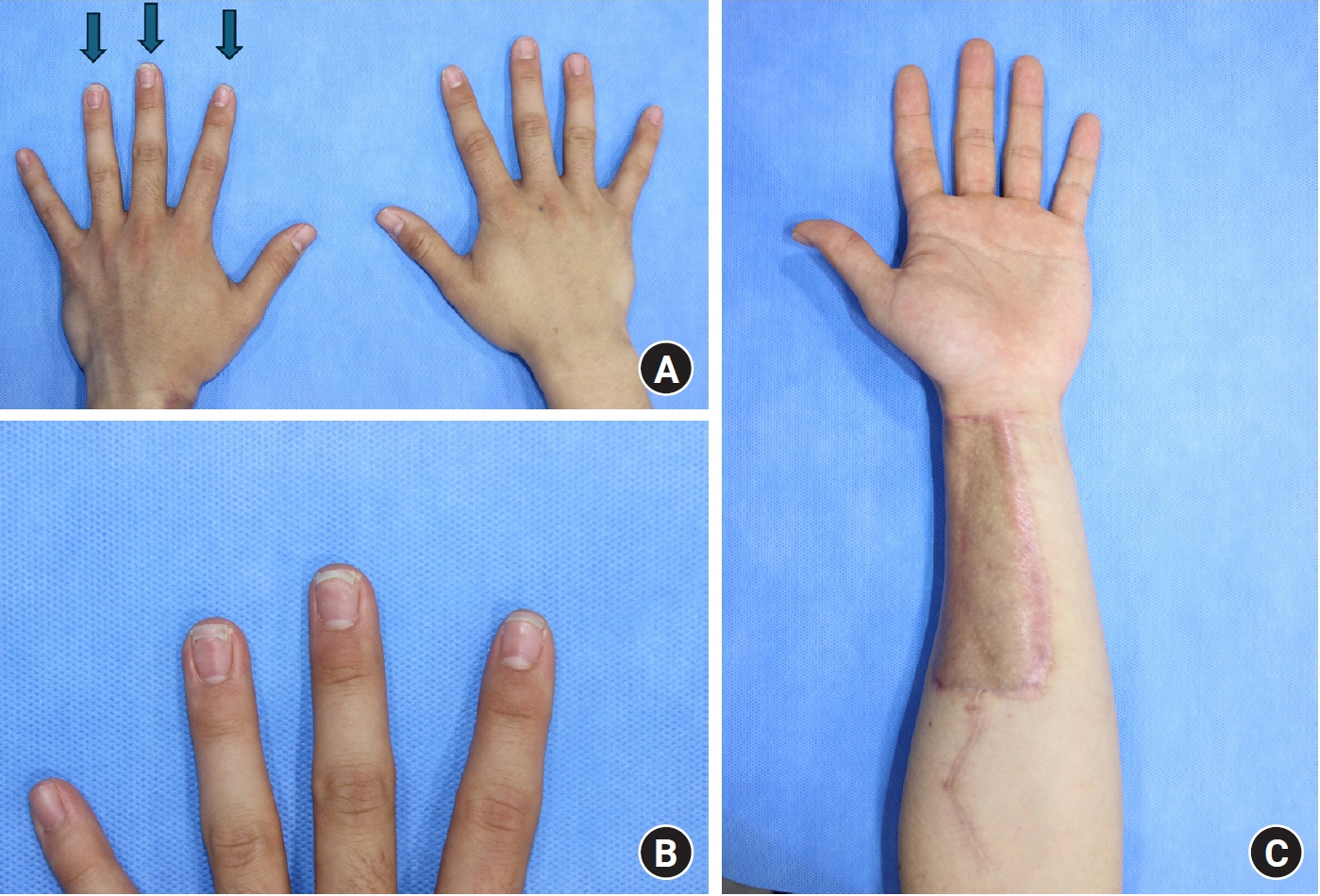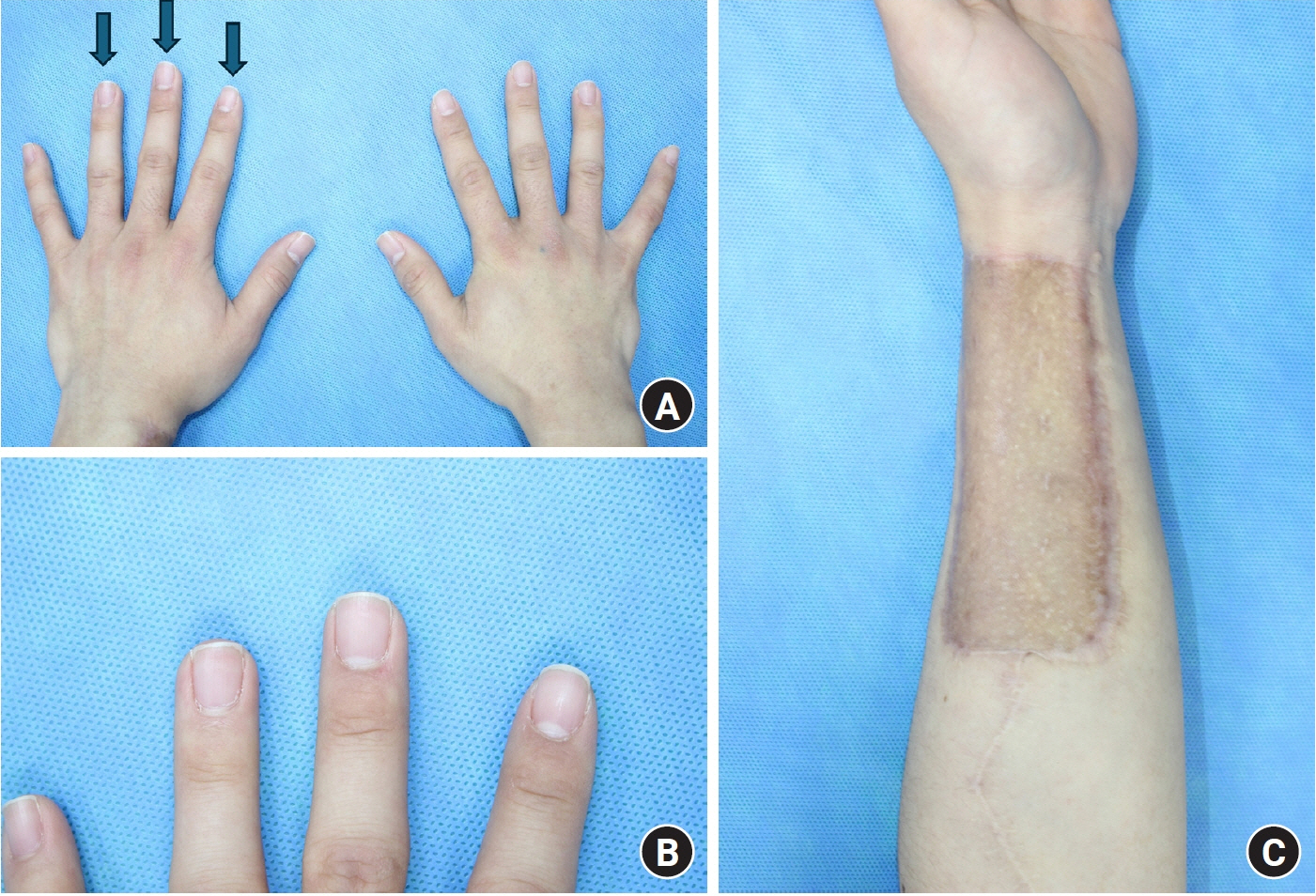Arch Hand Microsurg.
2024 Jun;29(2):122-126. 10.12790/ahm.24.0004.
Nail growth disorder in multiple fingers following harvesting of radial forearm free flap for phalloplasty in gender-affirming surgery: a case report
- Affiliations
-
- 1Department of Plastic and Reconstructive Surgery, Hallym University Kangdong Sacred Heart Hospital, Seoul, Korea
- KMID: 2556363
- DOI: http://doi.org/10.12790/ahm.24.0004
Abstract
- Nail growth disturbance commonly takes place after trauma or relevant diseases, such as infections and tumors. However, abnormal growth of the nail plate sometimes occurs without an obvious causative factor. This report presents the case of a patient who underwent male genital reconstruction with a radial forearm free flap for gender affirmation. Although the entire process was smooth, with no accidental events, the second, third, and fourth phalangeal nail plates of the hand from which the flap was harvested showed no evident growth of the fingernail 2 months postoperatively. Nail production was preserved in the remaining fingernails. Typical symptoms, such as redness, swelling, and tenderness, were noted upon clinical observation. Eventually, nail production restarted 5 months after surgery. Steroid and antibiotic treatment was attempted to reduce periungual inflammation. Additionally, close observation with psychological support was conducted.
Keyword
Figure
Reference
-
References
1. Lee DH, Heo YM, Yi JW, Nam HJ, Sung WS. Growth disturbance of nail plate after a metacarpal fracture: four cases report. J Korean Soc Surg Hand. 2013; 18:167–72.
Article2. Kim K, Lee D, Jung S, Chung CH, Chang Y. Pedicled anterolateral thigh flap phalloplasty combined with radial forearm free flap urethral reconstruction in gender-affirming surgery: a report of two cases. Arch Hand Microsurg. 2023; 28:302–7.
Article3. Kılıç Sayar S, Sayar Y. Nail disorders associated with cast immobilization of the forearm and wrist: report of two cases and review of the literature. An Bras Dermatol. 2021; 96:721–5.4. Tosti A, Piraccini BM, Camacho-Martinez F. Onychomadesis and pyogenic granuloma following cast immobilization. Arch Dermatol. 2001; 137:231–2.5. Lee DK, Lipner SR. Optimal diagnosis and management of common nail disorders. Ann Med. 2022; 54:694–712.6. Pampín A, Sanz-Robles H, Feltes RA, López-Estebaranz JL. Onychomadesis and pyogenic granulomas after postoperative upper-limb immobilization. Actas Dermosifiliogr. 2014; 105:528–9.7. Grover C, Saha S, Sharma S. Thiamethoxam-induced subclinical onychomadesis. Skin Appendage Disord. 2022; 8:407–11.8. Ivanova ZG, Aleksiev TI, Dobrev HP. Onychomadesis in a COVID-19 patient. Wien Med Wochenschr. 2023; 173:272–5.9. Bruner TW, Hanasono MM, Skoracki RJ. Radial forearm free flap morbidity: a rare case of a normal preoperative arteriogram and acute intraoperative hand ischemia. Can J Plast Surg. 2011; 19:102–4.
Article10. Jones BM, O'Brien CJ. Acute ischaemia of the hand resulting from elevation of a radial forearm flap. Br J Plast Surg. 1985; 38:396–7.
Article
- Full Text Links
- Actions
-
Cited
- CITED
-
- Close
- Share
- Similar articles
-
- Pedicled anterolateral thigh flap phalloplasty combined with radial forearm free flap urethral reconstruction in gender-affirming surgery: a report of two cases
- One-Stage Microsurgical Phalloplasty using the Free Radial Forearm Osteocutaneous Sensory Flap
- Proximal bifurcation of the superficial palmar branch of the radial artery and anomalous superficial course of the distal radial artery: a case report
- Radial forearm free flap in a patient with an unusual radial artery variation: a case report
- Unusual anomaly of the radial artery encountered during the elevation of a radial forearm free flap: a case report






